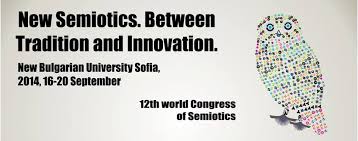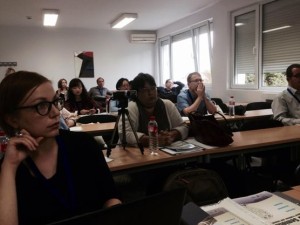A performer’s polyfunctionality discussed at the 12th World Congress of Semiotics
- 2014-09-17
- | News

HARPS coordinator, Head of LMTA Postgraduate Studies Office, and junior research fellow of the project “Performer’s Polyfunctionality in Musical, Cultural and Social Processes” Lina Navickaitė-Martinelli has participated at the 12th World Congress of Semiotics “New Semiotics: Between Tradition and Innovation”. The congress took place on September 16-20 in Sofia, Bulgaria. The event, which featured over 500 participants from 61 countries, was organized by the New Bulgarian University together with the International Association for Semiotic Studies (IASS/AIS) and the Southeast European Center for Semiotic Studies.
L. Navickaitė-Martinelli’s paper “Performer as a Meaning-Generator” (part of the Musical Semiotics session) presented some semiotics reflections on creativity in the art of musical performance. Seeing it from a semiotic perspective, musical performance is understood as a communication model in which a series of coded messages are sent or enacted and their meanings received or decoded. In such an analysis of performer’s art, a number of variables of private and public, musical and extra-musical articulation are of research interest. For instance, performers have their own personality and inclinations; they are exposed to different forms of education and influences; they develop certain technical and stylistic abilities; they find certain repertoires more suitable than others; they develop a public persona… All this is in one way or another reflected in the music played. The paper presented was meant to investigate how the artistic, personal and social identity of a musician is communicated through the performance, and what new meanings are created in this process.
Prepared as part of the cultural development project “A Performer’s Polyfunctionality in Musical,
Cultural and Social Processes” funded by the Lithuanian Research Council (Contract No MIP-095/2013).


